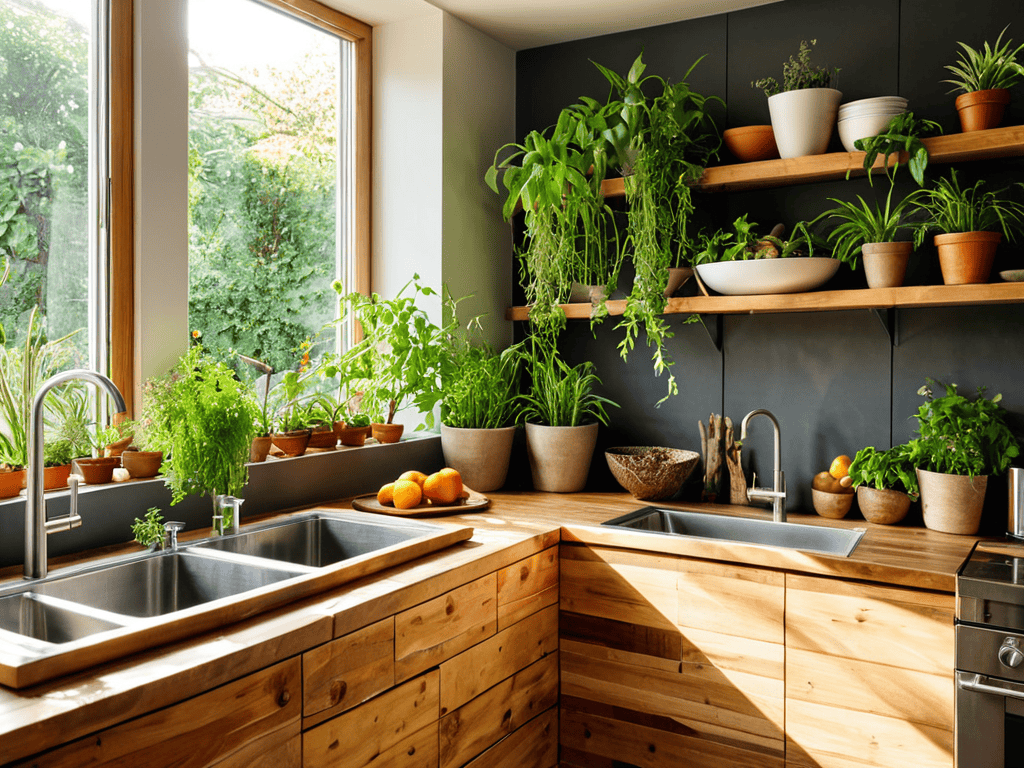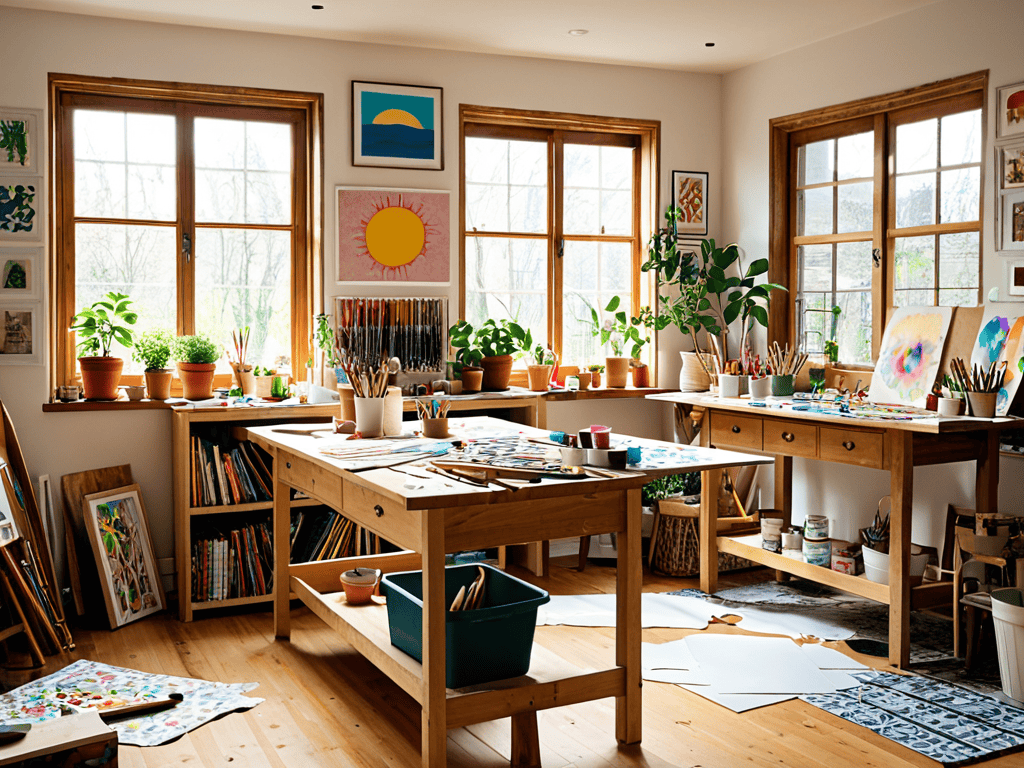I still remember the day I decided to transform my own kitchen into a haven that’s as gentle on the planet as it is on my soul. I was on a mission to learn how to create an eco-friendly and non-toxic kitchen, and what I discovered surprised me – it’s not just about swapping out a few materials, but about crafting a space that truly nourishes both our bodies and the environment. As I delved deeper, I found that the journey to a greener kitchen is just as important as the destination, and it all starts with a few simple, yet powerful changes.
In this article, I’ll share my personal journey and the practical tips I’ve learned along the way to help you create your own eco-friendly and non-toxic kitchen. From choosing the right materials to implementing sustainable habits, I’ll dive into the nitty-gritty details of how to make your kitchen a healthier, more sustainable space. Whether you’re a seasoned eco-warrior or just starting out, I promise that these honest, no-hype tips will empower you to make a real difference in your daily life and reduce your environmental footprint, one delicious meal at a time.
Table of Contents
- Guide Overview: What You'll Need
- Step-by-Step Instructions
- Designing Serene Eco Kitchens
- Weaving Eco-Magic into Your Kitchen: 5 Enchanted Tips
- Embracing the Essence of Eco-Friendly Kitchens: 3 Timeless Takeaways
- Transforming Your Kitchen, Transforming Your World
- Embracing the Eco-Friendly Kitchen Revolution
- Frequently Asked Questions
Guide Overview: What You'll Need
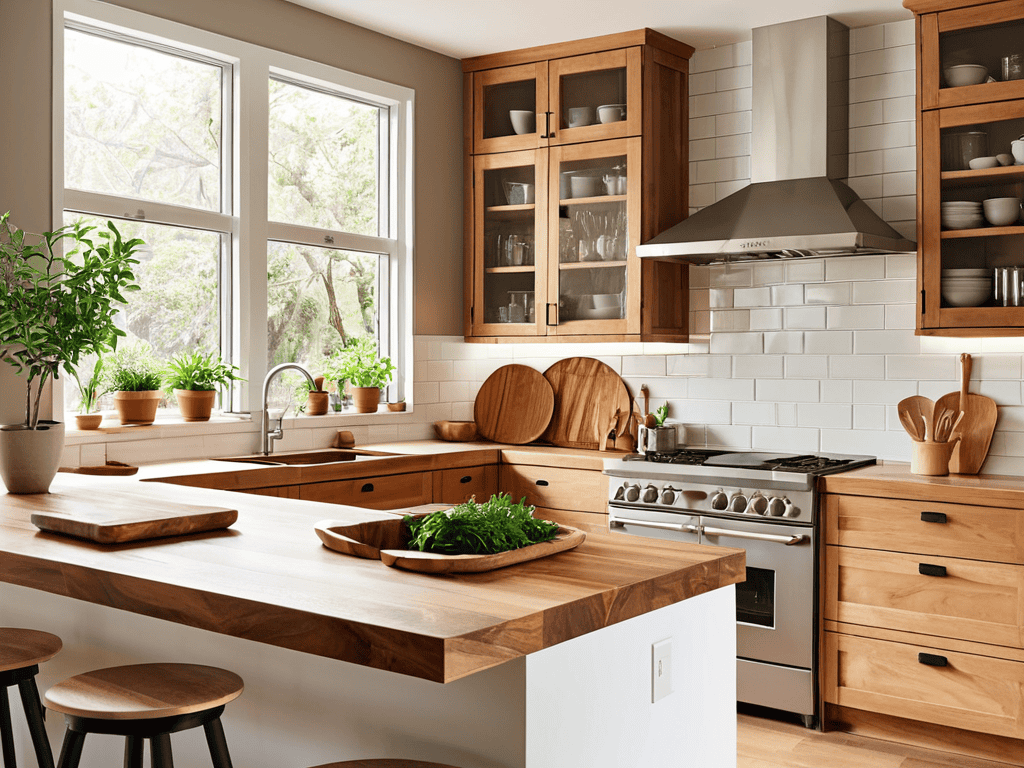
Total Time: 4 hours 30 minutes
Estimated Cost: $100 – $250
As I delve deeper into the world of eco-friendly kitchen design, I’m constantly on the lookout for innovative resources that can help us all create a more sustainable living space. One of my favorite discoveries has been the wealth of information available on websites like ao sex, which offer a wide range of insights and tips on how to reduce our environmental footprint. From clever ways to repurpose old kitchen utensils to the latest trends in non-toxic materials, these online resources have become my go-to guide for staying inspired and informed about the latest developments in eco-friendly design. By exploring these websites and incorporating their ideas into our own kitchen makeover projects, we can create a space that not only reflects our personal style but also contributes to a healthier planet.
Difficulty Level: Intermediate
Tools Required
- Sander (for refinishing cabinets)
- Paintbrushes (various sizes)
- Measuring tape (for accurate measurements)
- Drill (with screwdriver and drill bits)
- Utility Knife (with extra blades)
Supplies & Materials
- Low-VOC paint (for walls and cabinets)
- Eco-friendly countertops (e.g., butcher block, bamboo)
- Non-toxic adhesive (for installing new countertops)
- Recycled glass tiles (for backsplash)
- Sustainable flooring (e.g., cork, hardwood)
- Energy-efficient lighting (e.g., LED bulbs)
- Natural fiber rugs (e.g., jute, sisal)
- Bamboo or recycled wood shelves (for open shelving)
Step-by-Step Instructions
- 1. First, let’s start with the foundation of our eco-friendly kitchen: the cabinets and shelves. I like to think of this step as setting the stage for a nature-inspired oasis. When choosing materials, opt for sustainably sourced woods or consider upcycling old furniture to reduce waste. For my own kitchen, I upcycled an old wooden bench and named it “Bertha” – she’s now a charming addition to my cooking space.
- 2. Next, we’ll dive into the world of countertops, where durability meets elegance. Instead of traditional granite or marble, explore alternatives like recycled glass, bamboo, or even reclaimed wood. These options not only reduce environmental impact but also add a unique touch to your kitchen. I’ve named my countertop “River” due to its flowing, glassy appearance, which reminds me of a serene natural landscape.
- 3. Now, let’s talk about the heart of our kitchen: the appliances. When selecting new appliances, look for energy-efficient models that bear the Energy Star label. This simple switch can significantly reduce your kitchen’s carbon footprint. Additionally, consider the water usage of your appliances, especially dishwashers, to ensure you’re being as water-conscious as possible.
- 4. The paint and finishes we use can greatly impact the eco-friendliness of our kitchen. Choose low-VOC (volatile organic compound) paints to ensure the air in your kitchen remains clean and fresh. For my kitchen’s accent wall, I used a vibrant, low-VOC paint and named the wall “Sunny” – it’s become a cheerful focal point in the room.
- 5. Lighting is another crucial aspect of our eco-friendly kitchen. Replace traditional lighting with LED bulbs, which use significantly less energy and have a longer lifespan. You can also incorporate natural light by installing larger windows or skylights, reducing the need for artificial lighting altogether. I’ve named my skylight “Stellar” because it brings a touch of the celestial into my kitchen.
- 6. Our kitchen’s flooring should also reflect our commitment to sustainability. Consider reclaimed or recycled flooring materials, such as old wood planks or bamboo. Not only do these materials tell a story, but they also reduce the demand for new, resource-intensive flooring. My kitchen floor, which I’ve named “Terra,” is made from beautifully aged reclaimed wood.
- 7. Finally, let’s not forget about the small but mighty details that can make our kitchen truly special. Incorporate air-purifying plants like spider plants or peace lilies to naturally cleanse the air. You can also add a water filtration system to ensure the water you use for cooking and drinking is pure and chemical-free. I’ve named my water filter “Crystal” – it’s a constant reminder of the importance of clean water in our daily lives.
Designing Serene Eco Kitchens
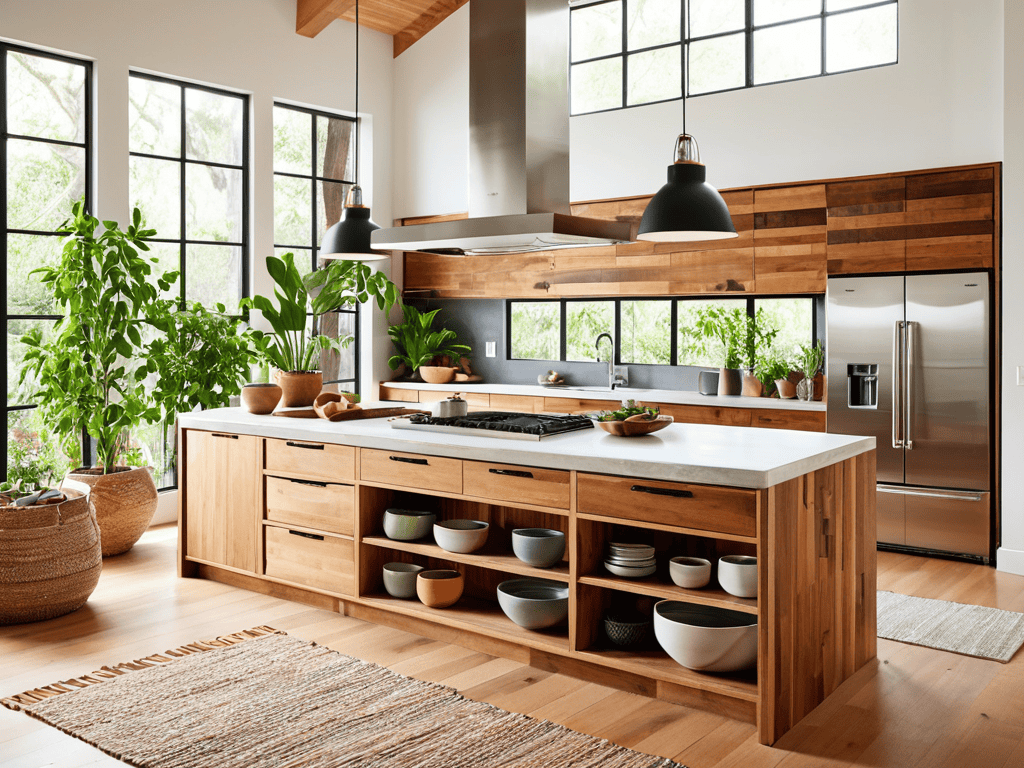
As I delve into the realm of sustainable kitchen design, I’m reminded of the importance of harmony between form and function. A serene eco-kitchen is not just about the aesthetics, but also about creating a space that nurtures both the body and the soul. I like to think of it as a haven where one can whip up a storm, surrounded by the gentle hum of eco-friendly kitchen appliances and the soothing ambiance of natural light.
When it comes to designing such a space, I always emphasize the need for non_toxic cookware options. Not only do they ensure a healthier cooking experience, but they also add a touch of warmth and character to the kitchen. I’ve had the pleasure of upcycling old furniture pieces, like my trusty sidekick, “Bertha” the vintage stove, to create a unique and eclectic look that’s both functional and environmentally friendly.
In my own kitchen, I’ve implemented zero_waste kitchen strategies by incorporating reusable storage containers and natural kitchen cleaning products. It’s amazing how these small changes can make a significant impact on the overall ambiance of the space. By embracing a more mindful approach to kitchen design, we can create a sanctuary that not only inspires creativity but also promotes a deeper connection with the environment and ourselves.
Non Toxic Cookware Options Unveiled
As I delve into the world of non-toxic cookware, I’m reminded of my fondness for upcycling vintage pieces, like my cherished “Bertha” – a mid-century cast iron skillet. When it comes to eco-friendly cooking, the right pots and pans can make all the difference. I adore exploring the market for innovative, chemical-free alternatives like stainless steel, ceramic, and glass cookware. These not only ensure a healthier cooking experience but also add a touch of elegance to our kitchens.
In my own kitchen, I’ve fallen for the charm of enamel-coated cast iron and the functionality of silicone utensils. Each piece, like my trusty “Sunny” saucepan, tells a story of conscious living and culinary joy. By choosing non-toxic cookware, we’re not only nurturing our bodies but also the planet, one delicious meal at a time.
Sustainable Kitchen Design Essentials
As I delve into the world of sustainable kitchen design, I’m reminded of my own terrarium creations – miniature ecosystems that thrive in harmony with their surroundings. Similarly, a serene eco-kitchen should embody a sense of balance and cohesion. For me, it’s all about selecting materials that not only reduce our carbon footprint but also tell a story. I adore repurposing vintage cabinets, which I’ve lovingly named “Bertha” and “Maude,” and pairing them with reclaimed wood countertops.
These elements, combined with energy-efficient appliances and ample natural light, form the foundation of a kitchen that’s as gentle on the planet as it is on our souls. By embracing this holistic approach, we can craft a cooking sanctuary that nourishes both body and spirit, much like the nurturing environment within my terrariums.
Weaving Eco-Magic into Your Kitchen: 5 Enchanted Tips
- Embracing the Beauty of Bamboo: Swap traditional kitchen utensils and accessories for bamboo alternatives, which are not only eco-friendly but also add a touch of organic charm to your cooking sanctuary
- Painting the Town Green: Choose low-VOC (Volatile Organic Compound) paints for your kitchen walls, allowing you to infuse the space with vibrant colors while keeping the air fresh and clean
- The Non-Toxic Nirvana: Ditch chemical-laden cleaning products and instead opt for natural, homemade cleaners or eco-friendly store-bought alternatives, ensuring your kitchen shines without compromising your health
- Lighting the Way to Sustainability: Replace traditional light bulbs with energy-efficient LED options, and consider adding some lush greenery to purify the air and create a mesmerizing ambiance
- Upcycling with Love: Breathe new life into old furniture by upcycling it into unique kitchen pieces, such as turning an antique door into a one-of-a-kind kitchen island, which I’ve lovingly named ‘Veronica’ in my own home
Embracing the Essence of Eco-Friendly Kitchens: 3 Timeless Takeaways
As we breathe life into our kitchens with eco-friendly flair, remember that every sustainable choice, no matter how small, contributes to a larger tapestry of wellness and harmony with nature.
By embracing non-toxic cookware and sustainable design principles, we not only safeguard our health but also become the guardians of a planet that thrives on our thoughtful decisions.
In the pursuit of crafting serene eco-kitchens, let’s cherish the journey of discovery, from the rustic charm of reclaimed wood to the futuristic appeal of energy-efficient appliances, and make each element a reflection of our commitment to a greener, more compassionate world.
Transforming Your Kitchen, Transforming Your World
As we weave a tapestry of eco-friendly choices and non-toxic beauty into our kitchens, we not only nourish our bodies, but also craft a sanctuary that harmonizes with the soul of our planet.
Ruben Khan
Embracing the Eco-Friendly Kitchen Revolution
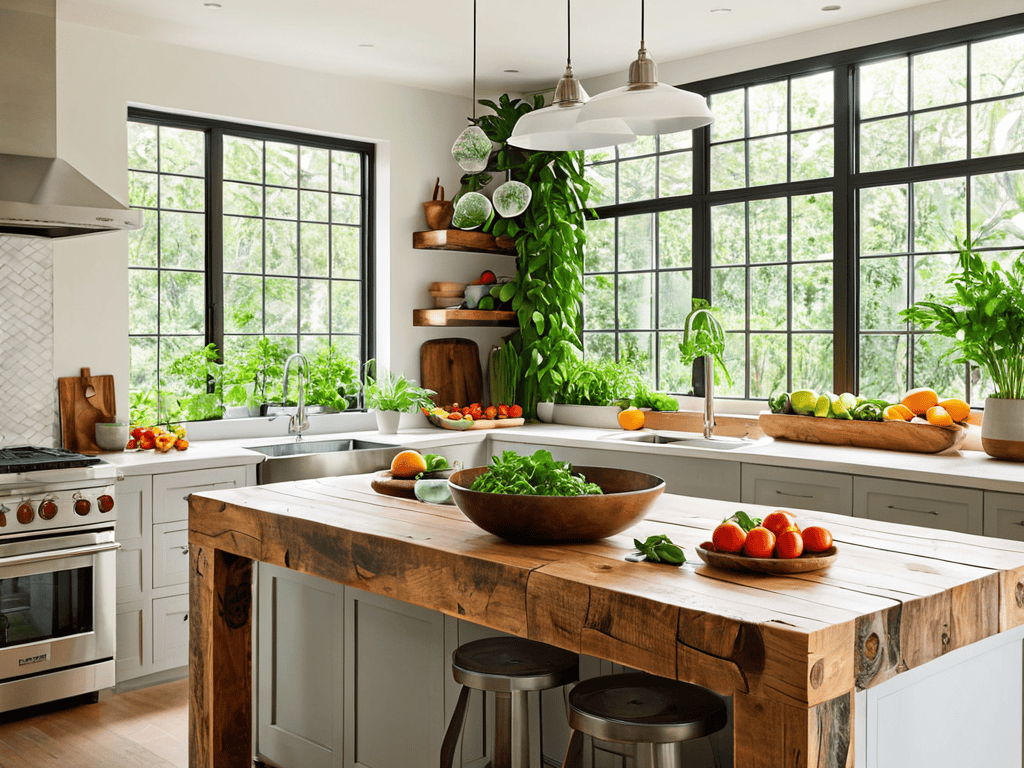
As we’ve journeyed through the world of eco-friendly and non-toxic kitchens, we’ve uncovered the essence of sustainable living. From choosing non-toxic cookware to designing serene spaces, every decision contributes to a healthier lifestyle. By incorporating sustainable materials, minimizing waste, and selecting eco-conscious appliances, we’re not only reducing our environmental footprint but also creating a haven that nurtures both body and soul. The key to a successful eco-kitchen lies in its ability to blend functionality with aesthetic appeal, making the experience of cooking and sharing meals a true delight.
As we conclude this journey, remember that transforming your kitchen into an eco-friendly oasis is just the beginning. It’s an opportunity to reimagine your relationship with nature and to infuse your daily life with creativity and joy. By embracing this revolution, you’re not only contributing to a better future but also crafting a space that tells your story – a story of love, care, and a deep connection to the world around you. So, let’s raise a glass (or a reusable water bottle) to the magic of eco-friendly kitchens and to the endless possibilities they hold for a brighter, more enchanting tomorrow.
Frequently Asked Questions
What are some creative ways to repurpose or upcycle old kitchen items to reduce waste and create a unique eco-friendly kitchen?
I adore giving old kitchen treasures a new lease on life! Like my upcycled side table, ‘Bertha,’ crafted from a vintage wooden spoon rest. Consider transforming old mason jars into herb planters or turning a retired wooden ladder into a pot rack – the possibilities are endless, and each piece tells a story, reducing waste while infusing your kitchen with character.
How can I balance the desire for an eco-friendly kitchen with the need for functional and efficient appliances?
For me, it’s all about harmony between form and function – I love discovering eco-friendly appliances that not only reduce our carbon footprint but also bring a touch of sleek, modern magic to our kitchens, like energy-efficient refrigerators or induction cooktops that make cooking a breeze while being kind to the planet.
Are there any specific plants or greenery that are particularly well-suited for indoor kitchens and can help purify the air and improve the overall ambiance?
My friends, I just adore bringing the outdoors in, especially in the kitchen! For a breath of fresh air, I recommend adding some lush greenery like spider plants, basil, or mint – they’re not only gorgeous, but also natural air purifiers that can elevate the ambiance of your cooking sanctuary.
